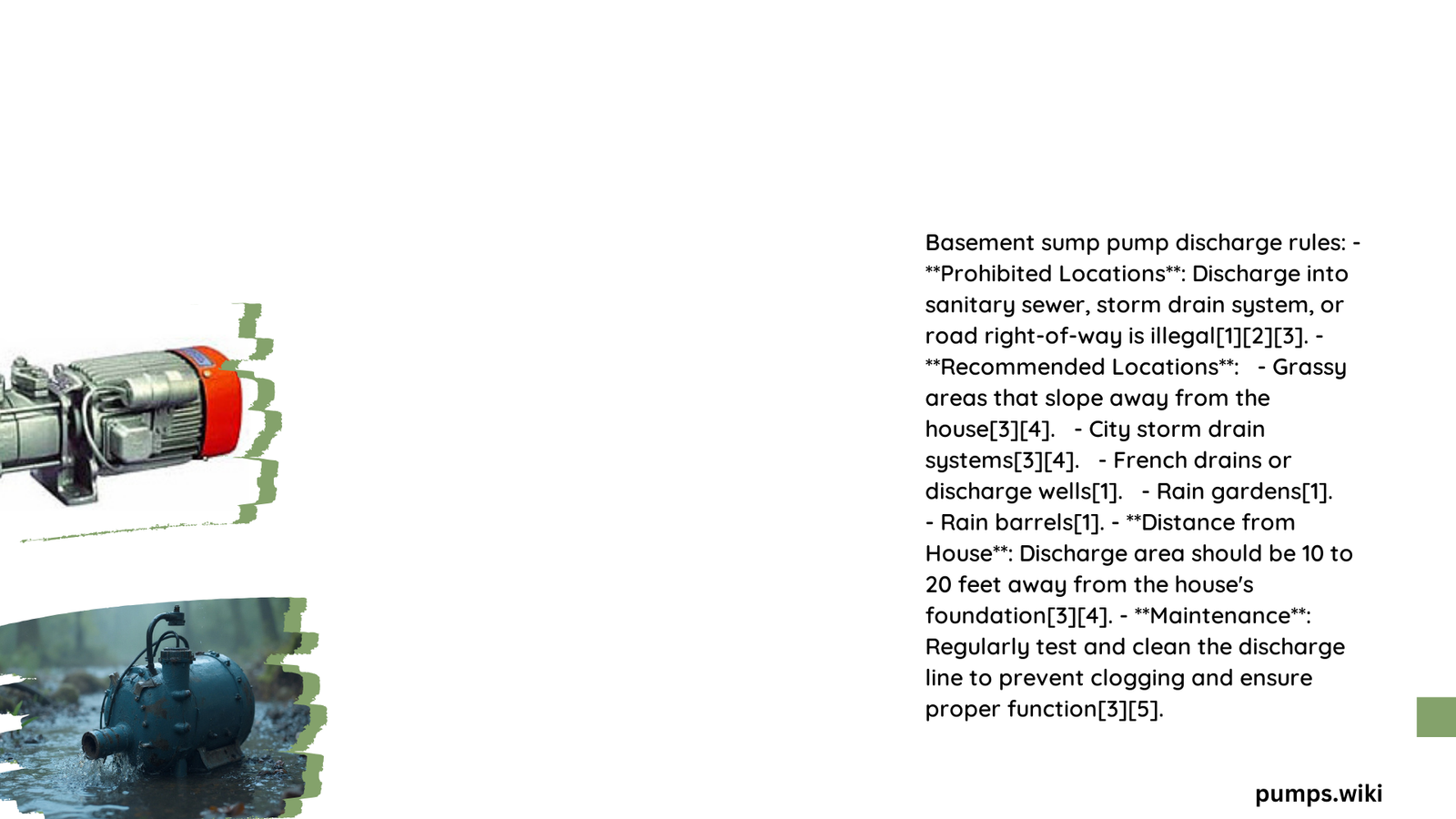Navigating basement sump pump discharge rules is crucial for homeowners seeking to protect their property and comply with local regulations. Understanding where and how to discharge water from your sump pump can prevent legal issues, environmental contamination, and potential damage to your home’s foundation. Proper discharge methods involve strategic water redirection, adherence to local codes, and careful consideration of drainage pathways.
What Are the Primary Basement Sump Pump Discharge Rules?
Basement sump pump discharge rules are complex legal and practical guidelines that govern how homeowners manage water extracted from their basement drainage systems. These rules vary by location but generally focus on preventing water-related damage and environmental contamination.
Why Do Discharge Location Rules Matter?
| Discharge Location | Legal Status | Potential Consequences |
|---|---|---|
| Sanitary Sewer | Prohibited | Fines, System Overload |
| Storm Drain | Often Permitted | Minimal Risk |
| Grassy Area | Recommended | Low Environmental Impact |
| Neighboring Property | Strictly Forbidden | Potential Lawsuits |
Where Should Sump Pump Water Be Discharged?
Homeowners have several acceptable discharge options:
- Grassy Areas
- Must slope away from foundation
- Minimum 10-20 feet from house
-
Prevent water pooling near structure
-
Municipal Storm Drain Systems
- Requires local permit
- Must meet specific connection standards
-
Professional installation recommended
-
Dry Wells
- On-property water management solution
- Requires proper engineering
- Helps prevent ground saturation
How Far Should Discharge Pipe Extend?
The discharge pipe should:
– Extend at least 10-20 feet from foundation
– Be buried below frost line (approximately 40 inches)
– Have a slight downward slope for efficient drainage
– Use minimum 1.5-inch diameter pipe
What Are Common Discharge Violations?
Critical violations include:
– Discharging into sanitary sewer
– Creating water flow toward neighboring properties
– Insufficient pipe diameter
– Improper pipe installation
– Lack of necessary municipal permits
Technical Discharge Pipe Specifications
Recommended Pipe Materials:
– PVC
– HDPE (High-Density Polyethylene)
– Flexible drainage pipe
Installation Requirements:
– Minimum 10-foot horizontal extension
– Below frost line
– Gravity-assisted flow
– No sharp bends
Legal Compliance Checklist
✅ Obtain local municipal permits
✅ Follow drainage regulations
✅ Maintain proper discharge distance
✅ Use approved pipe materials
✅ Prevent water accumulation near foundation
Potential Consequences of Non-Compliance

- Financial Penalties: Significant municipal fines
- Property Damage: Foundation erosion
- Legal Liability: Potential neighbor disputes
- Environmental Impact: Potential water contamination
Professional Recommendations
- Consult local building department
- Get professional sump pump installation
- Regular system maintenance
- Annual discharge pathway inspection
Key Takeaways
Basement sump pump discharge rules protect homeowners by ensuring proper water management, preventing environmental issues, and maintaining structural integrity. Understanding and implementing these guidelines is essential for responsible property maintenance.
Expert Tips
- Always prioritize water redirection away from foundation
- Invest in high-quality discharge components
- Stay informed about local municipal regulations
- Consider professional consultation for complex drainage scenarios
Reference:
- [Local Municipal Building Codes]
- [EPA Stormwater Management Guidelines]
- [Professional Drainage Association Standards]
